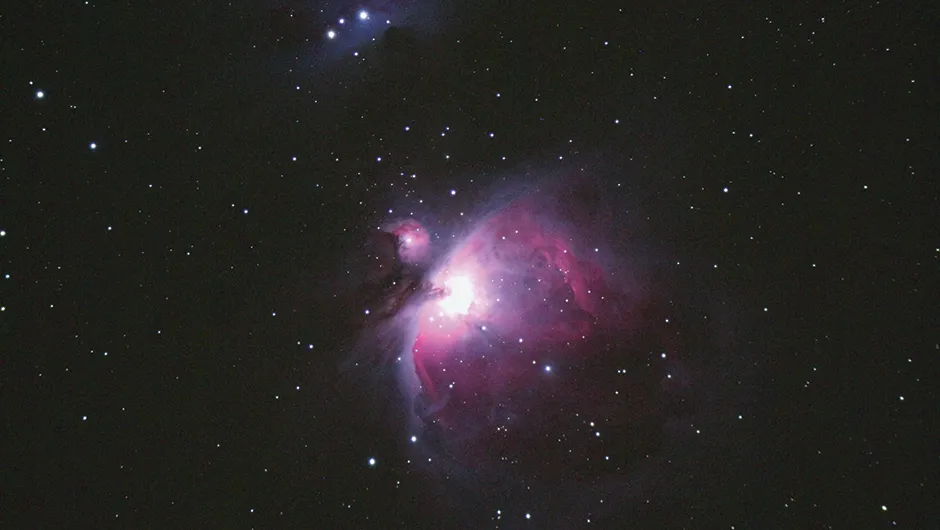Price: £643.36
Aperture: 80mm
Focal Length: 480mm; f/6
Supplier: Telescope House
Telephone: 01342 837098
Website: www.telescopehouse.com
The Meade Series 5000 80ED scope is an f/6 instrument with a single-arm mounting plate, like the Explore Scientific model.
The mounting plate is attached to a ring that fits snugly around the focuser assembly.
This ring has a locking screw on it, which allows the scope, and any camera fitted, to be rotated as a whole if it’s undone.
This rather simple idea is great when you want to turn the camera to get the best framing possible for your target.
You can do the same with the conventional tube rings on the other scopes of course, but this method is far more convenient and doesn’t run the risk of the scope slipping through loosened rings if the instrument is pointing high.
One minor point is that the mounting plate is quite short, which limits balance adjustment options somewhat.
The Meade’s dew-shield extends when the scope is in use and retracts for transport, reducing the scope’s length to just under 39cm.

A substantial metal dust cap screws into the front of the dew shield, which might be a bit of a cumbersome job with cold fingers in the dark.
There’s no finderscope included, but the dual-speed focuser is excellent.
As well as a focus tensioning screw, there’s also a separate locking screw so you don’t need to lose your favoured tension setting when you lock the focuser, as you would if tensioning and locking were done with the same screw.
Like the Explore Scientific, this focuser has plenty of back focus and we were nowhere near its limit when we used our DSLR at prime focus.
Our test images showed great promise, due mainly to the faster focal ratio of this scope.
The faint ‘ring’ of gas that runs to the southwest of the Orion Nebula was easy to make out in our 60s image.
There was distortion in the corners of our star shots, but a field flattener will correct this, as we established with the Explore Scientific unit.
The 1.75 x 2.75° field of our DSLR camera was perfect for a 60s test shot of the Pleiades cluster.
It meant the main member stars filled the central area of the image, while there was enough space around them to let the cluster ‘breathe’.
The faint, wispy blue reflection nebula that permeates the group was quite evident, even at this short exposure at ISO 1600.
The inside of the Meade has five baffles to stop stray light from interfering with the image and this contributes to the excellent contrast we saw when using the instrument visually.
This attribute carried over to our imaging tests: our over-exposed test shot of the Moon showed excellent contrast and revealed a couple of the fainter stars close to the bright Moon.
To sum up, we really liked the Meade scope.
Its solid, no-nonsense construction fills you with confidence when you’re outside with it in the dark.
Combined with a field flattener, the field of view is sharp, colour-fringe free and loaded with detail.
